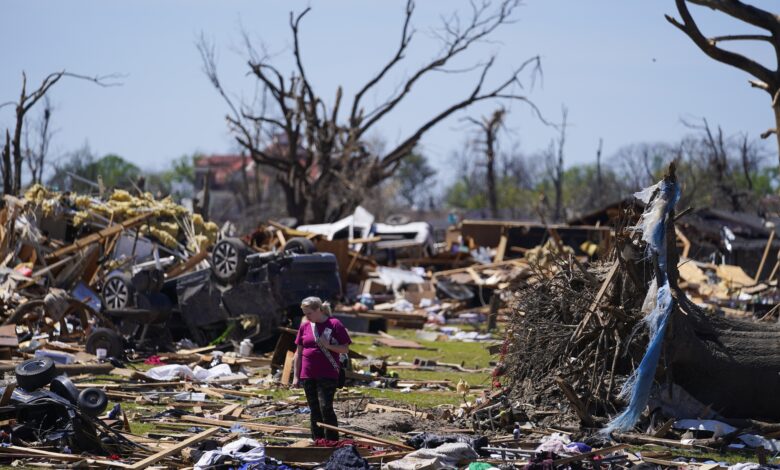More than half of at-home tornado deaths occur in mobile homes, state data shows

(AP) — When tornadoes strike, people aren’t just killed at home. Sometimes, they are killed by their homes. An AP analysis shows that tornadoes are disproportionately killing more people in mobile or manufactured homes, especially in the South.
The Associated Press analyzed tornado deaths and found that since 1996, 53% of the tornado deaths in people’s homes were in mobile or manufactured housing. That’s even though manufactured homes are less than 6% of the American housing stock. It’s more than 800 deaths in mobile or manufactured homes.
And when tornadoes are weak — with winds of 135 mph or less — an even higher proportion of tornado deaths at home, 79%, are in mobile homes.
MISSOURI
Since 1996, Missouri ranks second in the country with 252 tornado deaths, with 139 of them at home. Of those at-home deaths, 28.8% or 40, of them were in mobile or manufactured homes. Yet only 5.3% of Missouri’s housing stock are mobile homes.
OKLAHOMA
Since 1996, Oklahoma ranks fifth in the country with 131 tornado deaths, with 86 of them at home. Of those at-home deaths, 44.2% or 38, of them were in mobile or manufactured homes. Yet only 7.7% of Oklahoma’s housing stock are mobile homes.
ARKANSAS
Since 1996, Arkansas ranks sixth in the country with 126 tornado deaths, with 97 of them at home. Of those at-home deaths, 53.6%, or 52, of them were in mobile or manufactured homes. Yet only 9.9% of Arkansas’ housing stock are mobile homes.
One of the big problems, according to researchers, is that the federal HUD rules that call for tougher manufactured home standards, including anchoring mobile homes to the ground, apply only in hurricane zones, which is most of Florida and several counties along the coast. Those are not the areas where tornadoes usually hit. They hit inland where the weakest federal standards are, researchers told the AP. Most tornado-prone areas, including almost all of Alabama, Oklahoma, Missouri, Texas, and Mississippi are in Zone 1 with the most lax standards.
Also, those installation standards are based on hurricane winds, which are straight-line winds and are vastly different than tornadoes’ vertical lifting winds that are often stronger.



